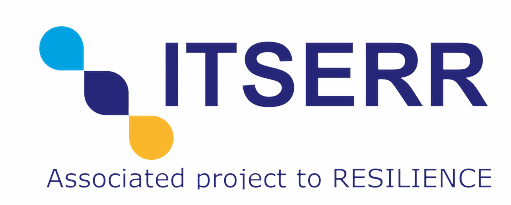Abstract
WP3, the Toolkit for Religious Studies (T-ReS), aims to improve the research experience of scholars by developing a technology applicable to other domains through the interdisciplinarity of Religious Studies. The T-ReS toolkit includes two major tasks: the development of CRITERION, an open-source software for creating critical editions of primary sources, and GNORM, a software for the automatic analysis and categorization of printed religious normative sources through data mining techniques and 3D visualization. CRITERION aims to improve the user-friendliness and interoperability of current tools for critical editions and to support uncommon and ancient languages. GNORM aims to provide a new type of analysis tool for producing novel, domain-specific knowledge by analyzing a corpus and providing scholars with new insights. Both tools will be sustainable in the long term and released with supporting documentation to increase user-friendliness.
Staffing
The WP3 leader is Alberto MELLONI, and the product owner is Federico ALPI. As WP leader, Alberto MELLONI is responsible for the overall management and coordination of WP3 activities. The product owner, Federico ALPI, is responsible for defining and prioritizing the features that will be included in the final product (in this case, the software tools being developed in WP3). They work closely with the development team to ensure that the product meets the needs of the intended users (scholars in the field of Religious Studies).
Steps
- Conduct analysis and prototyping of text editors and software tools for CRITERION and GNORM, and create prototypes for tools and shared library for ITSERR software tools.
- Prepare and validate development of IT components for T-ReS, including software research and prototyping for CRITERION and algorithmic research for GNORM.
- Evaluate and supervise domain-specific requirements for CRITERION and test prototypes, and prepare and apply guidelines for corpus pre-processing and build corpus for GNORM using Corpus Iuris Canonici as case study.
- Develop required software for T-ReS tools, including CRITERION as WYSIWYG editor prototype and plug-in system, data extraction system for GNORM using AI and computer vision algorithms, 3D visualization frontend for GNORM, and shared library for elements created within T-ReS and other WPs.
- Test and validate developed software and implement DevSecOps to ensure code deployment is automated and fast, improve delivery speed, and align development and IT operations.
- Disseminate and exploit T-ReS tools, including through training and workshops, and ensure sustainability of software through maintenance and support.
Outcomes
- A shared library of reusable software components for T-ReS
- A WYSIWYG editor prototype for CRITERION
- A collation analysis plug-in for CRITERION
- A system for extracting (meta)data for GNORM using artificial intelligence and computer vision algorithms
- A database architecture for storing extracted properties from GNORM
- A visualisation frontend for GNORM for 3D visualization and fruition
- Documentation for all T-ReS tools, including user manuals and advanced manuals for creating plug-ins and macros
- A report on the scientific, user, and technical requirements for T-ReS
- A report on the state-of-the-art analysis of text editors capable of producing critical editions
- A report on the evaluation of source material and suitable software tools for GNORM
- A report on the features required for a shared library for ITSERR software tools
- Prototypes for the T-ReS tools
- A report on the design and architecture of T-ReS, including recommendations for architectural and design components
- An updated version of the RESILIENCE architecture and design common components repository

